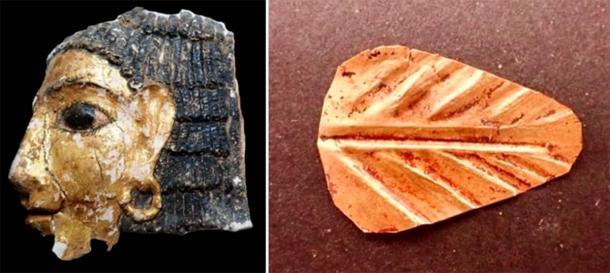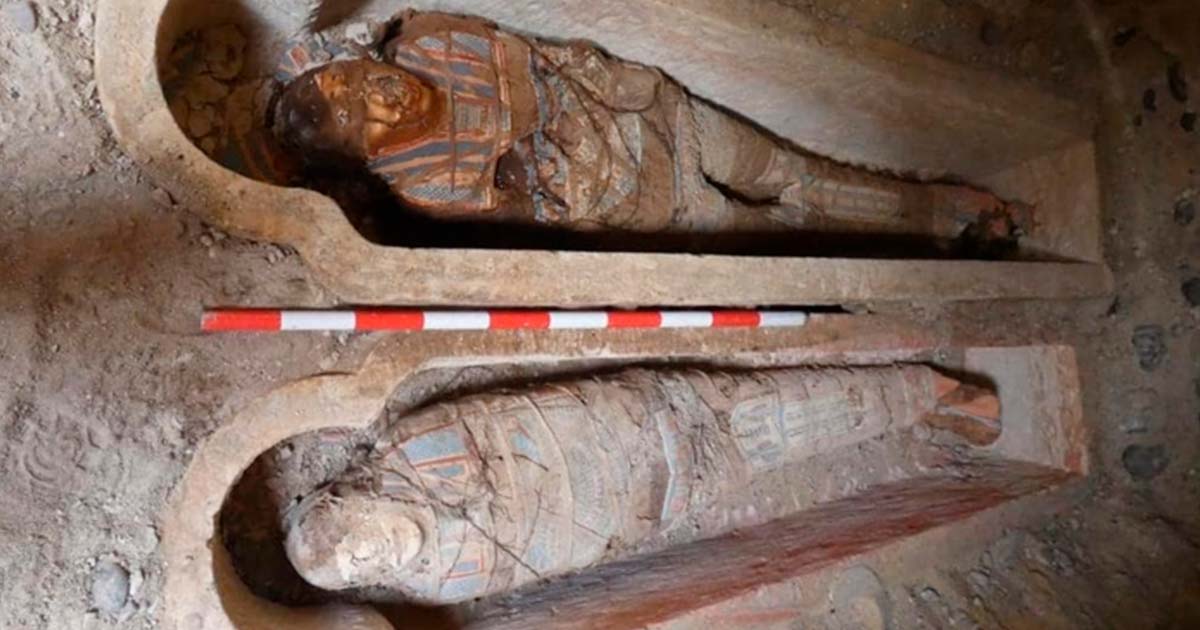Heart-pounding Tomb Discovery In Egypt Shakes Up Ptolemaic/Roman Traditions
Archaeologists in Egypt have made a heart-pounding discovery in Al-Bhanasa, Minya, unveiling a significant slice of ancient history. This latest find includes rock-carved graves from the Ptolemaic and Roman eras, a remarkable glimpse into the burial practices of these periods. The site has also revealed an array of artifacts for the first time in Al-Bhanasa, including well-preserved mummies, intricately designed coffins, exquisite gold masks, and terracotta statues. These discoveries promise to shed new light on the customs and artistic achievements of the ancient civilizations that once thrived in this region.
Ptolemaic and Roman Era Rock-Cut Tombs Unearthed
In a significant archaeological breakthrough, a Spanish mission led by Dr. Esther Ponce Milado from the University of Barcelona and the Old Near East Institute has uncovered a series of tombs in the Al-Bhanasa region of Minya province, Egypt. These tombs, dating back to the Ptolemaic and Roman eras, have revealed divergent burial practices and several Roman-era mummies.
The Ptolemaic Dynasty began in 305 BC, when the Macedonian General, Ptolemy declared himself King Ptolemy I Soter, having ruled as satrap for a number of years after Alexander the Great’s kingdom was divided between his generals in 323 BC. This dynasty lasted for nearly 300 years, before finally falling to Octavian and Rome in 30 BC.
The graves found represent examples from both periods, illustrating changes in burial practices and beliefs.
Dr. Mustafa Waziri, Secretary-General of the Supreme Council of Archaeology, noted that the Roman-era tombs, situated on the eastern side of the Upper Cemetery in Al-Bhanasa, showcase a new type of burial style. This style involves a pit carved into the natural rock; a method not previously seen in the Al-Bhanasa region.
- Last of the Kings of Egypt: The Ptolemaic Dynasty
- Egyptian Archaeologists Unearth Large Black Sarcophagus in Alexandria
An Array of Novel Artifacts Tell of Mixed Traditions
The site also yielded terracotta statues depicting the idol Isis-Aphrodite, crowned with a vegetal wreath, indicating the rich cultural and burial practices prevalent in the area during different periods.

Terracotta statues of Isis-Aphrodite were unearthed at the site. (Egypt Ministry of Tourism & Antiquities)
Dr. Adel Akasha, head of the Central Administration for Archaeology of Central Egypt, highlighted other remarkable finds at the site. These include parts of papyrus found inside a clay seal, numerous mummies wrapped in colorful rolls, and some adorned with vibrant funeral masks.
Notably, two mummies had tongues made of gold in their mouths, a well-known burial tradition from the Roman era supposedly to help preserve the deceased.
- 50 Mummies of Men, Women and Children Found in Ancient Egyptian Family Tomb
- Ptolemy Soter’s Strategy: Becoming Pharaoh And A God Of Egypt

Left, One of the bright funeral masks. Right, A gold tongue. (Egypt Ministry of Tourism & Antiquities)
Dr. Gamal Al-Samastawi, General Director of Archaeology of Central Egypt, described the architectural design of the tombs, which consist of a stone well that leads to a door closed off with mud bricks. This is the entrance to a large chamber containing both empty and mummy-filled coffins. A total of 23 mummies were discovered with the coffins, some with papier-mache masks.
There were also four human-shaped rock-hewn coffins, two of which contained mummies and small bottles of feminine perfume.

The distinct type of burial found is a new discovery for the Al-Bhanasa area. (Egypt Ministry of Tourism & Antiquities)
Additionally, Dr. Hassan Amer, a professor of archaeology at the University of Cairo and director of the mission's excavations, mentioned the discovery of several stone blocks belonging to a destroyed building. These blocks, adorned with plant drawings, grape clusters, and images of animals and birds like pigeons and cobras, hint at the site's rich historical tapestry.
The mission anticipates continuing its excavation work in upcoming seasons, aiming to uncover more secrets from this historically rich site.
Top image: Two of the mummies found in rock-cut tombs in Al-Bhanasa. Source: Egypt Ministry of Tourism & Antiquities
By Gary Manners

















